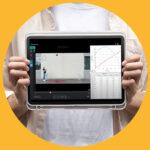
Sharing ideas and inspiration for engagement, inclusion, and excellence in STEM
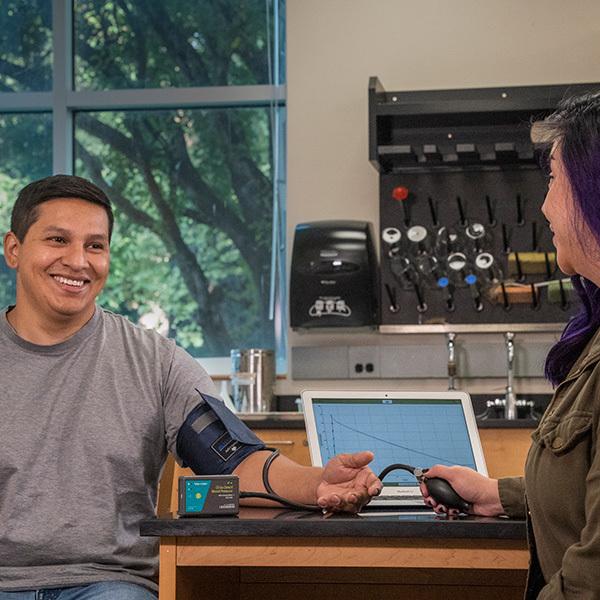
February is National Heart Month, a time to reflect on heart health—and, of course, to think about matters of the heart! Whether it’s the nerves before a big presentation or the flutter from meeting a crush, both excitement and stress can make your heart race. This blog post highlights two biomedical experiments that explore the physiological mechanisms behind heart rate, blood pressure, and stress responses, helping students understand how the body reacts to different stimuli using real-time data.
Whether you’re teaching general biology, human physiology, or a health science pathway, these engaging experiments provide effective, data-driven ways to explore cardiovascular health and biological systems, preparing students for careers in STEM and medical fields.
1. Blood Pressure and Autonomic Reflexes
Experiment #1 from Human Physiology Experiments: Volume 2
Every time your heart beats, it pumps blood into your arteries, delivering oxygen and nutrients throughout your body. Blood pressure measures the force of blood against the walls of arteries, and it’s an essential indicator of cardiovascular health. It’s typically recorded in two measurements: (1) systolic pressure, the higher value when your heart contracts to pump blood, and (2) diastolic pressure, the lower value when your heart is fully relaxed and refilling with blood. In some medical contexts, these values may be reported as the mean arterial pressure (MAP), which gives a more complete picture of blood flow by averaging systolic and diastolic pressures while accounting for blood flow and resistance.
The mean arterial pressure (MAP) is a calculation that helps doctors assess if there is enough blood flow to vital organs.
Blood pressure naturally fluctuates throughout the day based on activity, body position, and other factors. While chronic high blood pressure (or hypertension) is a serious health risk, not all spikes indicate a problem. Acute events—like a jump scare or seeing your crush—can cause a short-term spike in blood pressure.
This experiment explores how stressors like exposure to cold temperatures can activate the autonomic nervous system, causing temporary spikes in systolic and diastolic pressure. The experiment will help students understand these physiological changes and the role blood pressure plays in maintaining healthy circulation under both calm and stressful conditions.
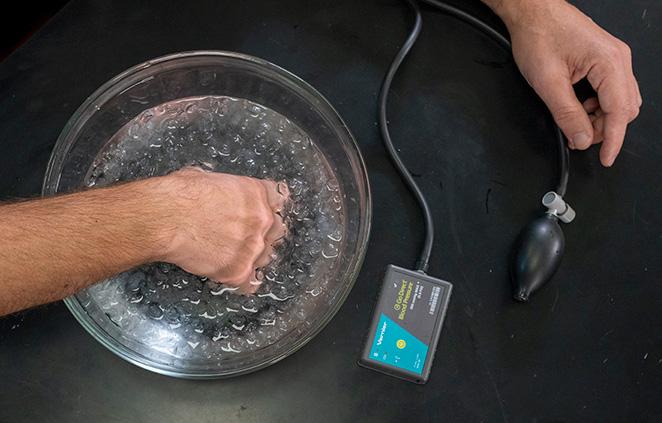
What You’ll Need
- Go Direct® Blood Pressure Sensor
- Device with Vernier Graphical Analysis®
- Bowl of ice water
What Students Will Do
In this experiment, students use the Go Direct Blood Pressure Sensor to measure blood pressure before and after exposure to cold. First, they collect a baseline measurement while relaxed and calm—no nerves yet! In the second part of the experiment, the student is exposed to a cold stimulus by dipping their hand in the ice water bath.
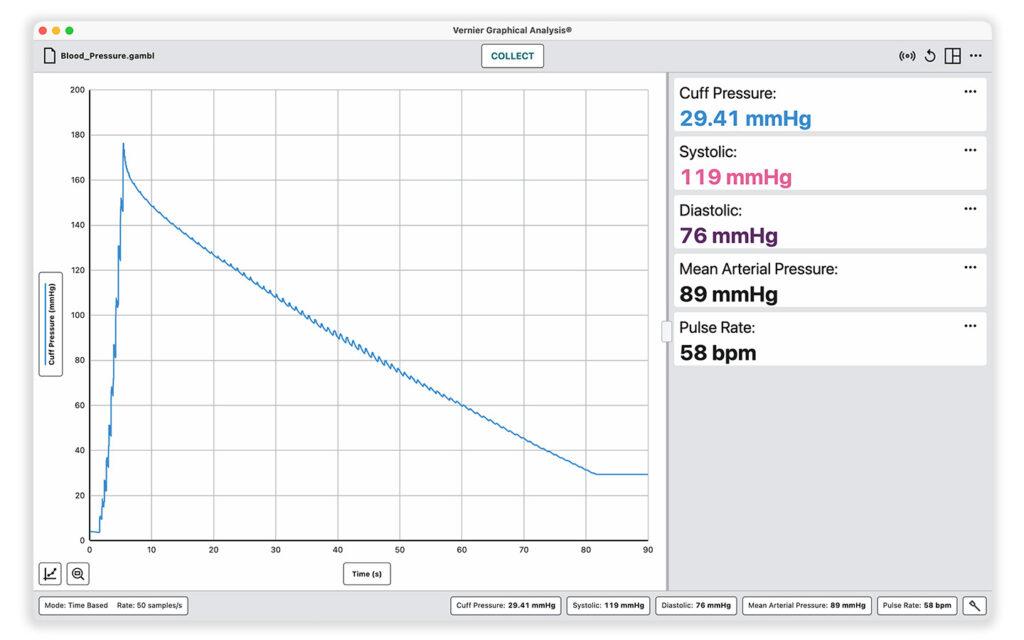
Blood pressure is highly sensitive to external and internal injuries and noxious stimuli, making it a useful vital sign in clinical settings. It serves as an indicator not only of health and disease but also of emotional states such as excitement and stress.
Tips
- Give students time to familiarize themselves with the blood pressure cuff and sensor to ensure they set it up properly. Students can monitor the pressure meter in Graphical Analysis as well as the LED on the Go Direct Blood Pressure Sensor to ensure the correct starting pressure has been reached.
- Make sure the subject sits still, with their forearm resting on a table and legs uncrossed, during data collection.
If you are collecting data above 6,000 feet elevation, follow recommended adjustments.
2. Biofeedback
Experiment #2 from Human Physiology Experiments: Volume 2
When the body experiences stress—like being unexpectedly plunged into ice water—biofeedback therapy is a method that helps individuals use real-time data to monitor and control their physiological responses.
As with the first experiment, the cold stimulus activates the sympathetic nervous system. These autonomic responses are typically associated with the “fight or flight” response and can cause an increase in heart rate and respiration rate. The goal of the experiment is for students to observe how their body reacts to stress and then use biofeedback techniques like deep breathing or relaxation to bring their physiological responses back to normal.
What You’ll Need
- Go Direct EKG Sensor or Go Wireless® Heart Rate
- Go Direct Respiration Belt
- Device with Vernier Graphical Analysis
- Bowl of ice water
What Students Will Do
In this experiment, students use either the Go Direct EKG Sensor or Go Wireless Heart Rate to measure heart rate and the Go Direct Respiration Belt to measure respiration rate. In the first part, students measure their baseline metrics while staying relaxed and calm. In the second part, students dip their feet into ice water to induce a stress response and then use relaxation techniques to bring their heart rate and respiration back to a calm state.
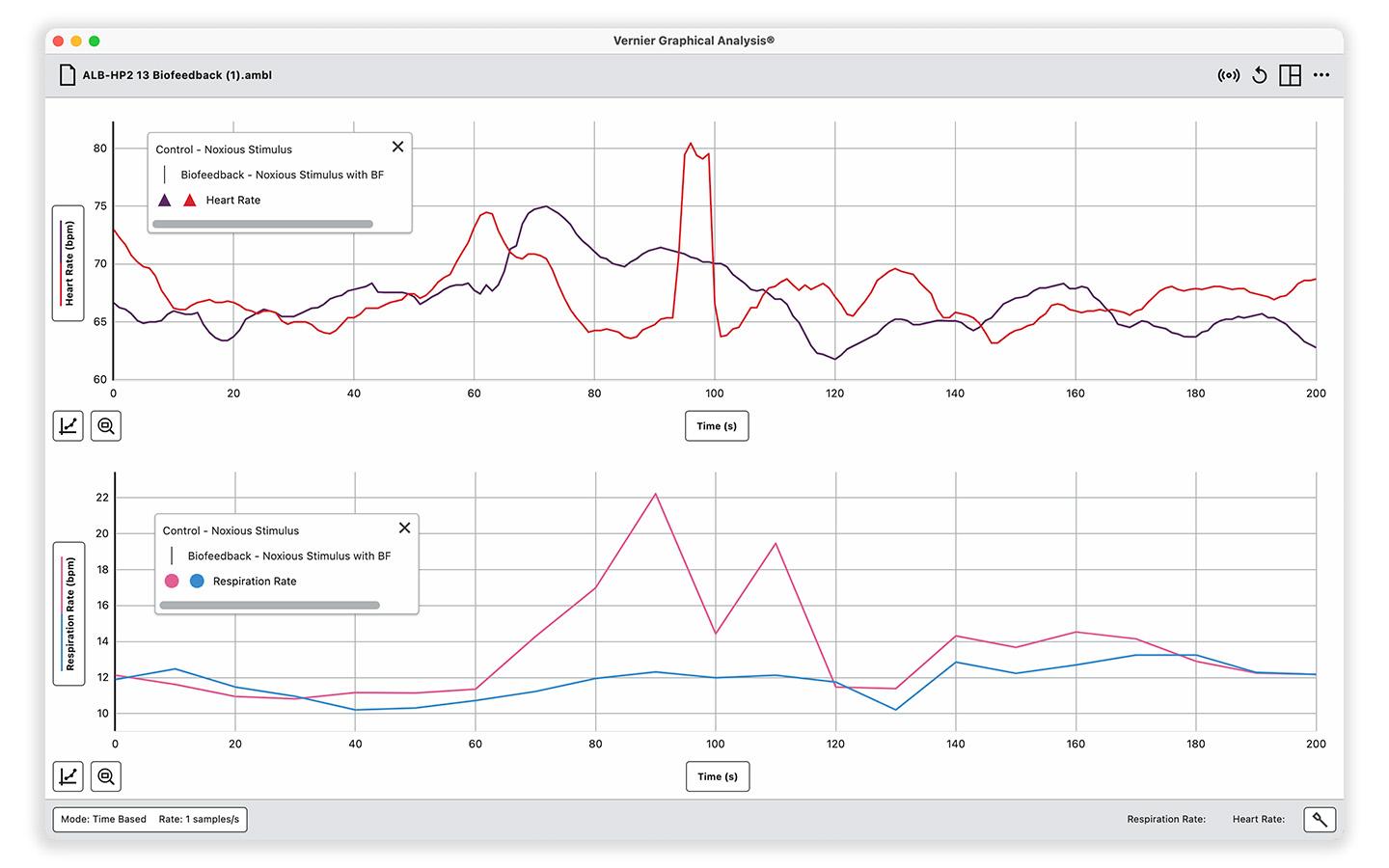
Tips
- Ensure the subject’s skin is clear of oil and lotion before attaching the EKG electrodes.
- Have test subjects sit so that they are unable to see the data-collection screen to help ensure that they don’t consciously alter their respiration rate.
- There are many different biofeedback techniques students can try—encourage them to brainstorm or research strategies as part of the experiment.
How These Experiments Support 3D Learning
These experiments allow students to explore how the autonomic nervous system regulates blood pressure, heart rate, and respiration rate in response to stress, helping them model the hierarchical organization of interacting systems in multicellular organisms. By using biofeedback, students learn how feedback mechanisms help the body maintain homeostasis.
Both experiments demonstrate how the body reacts to stress. Interestingly, however, both noxious stimuli (like the cold exposure) and fleeting emotions, like nerves before meeting someone new, can cause similar physiological reactions! In either case, the autonomic nervous system governs these responses, making understanding this system crucial to improving overall health and stress management.
Want to See More? Join Our Upcoming Webinar!
Learn how to integrate Vernier biomedical tools in your classroom and get practical tips, live demos, and Q&A with our experts.

Biomedical Investigations: EKG and Blood Pressure Analysis with Vernier
Tuesday, March 4, 2025
4:00–4:45 p.m. PST | 7:00–7:45 p.m. EST
Save My Seat
Learn more about how we support CTE programs and explore our human physiology solutions. Questions? Reach out to physiology@vernier.com, call 888-837-6437, or drop us a line in the live chat.
Note: Vernier products are designed for educational use only. They are not appropriate for industrial, medical, or commercial applications.
Share this Article

Sign up for our newsletter
Stay in the loop! Beyond Measure delivers monthly updates on the latest news, ideas, and STEM resources from Vernier.





